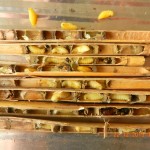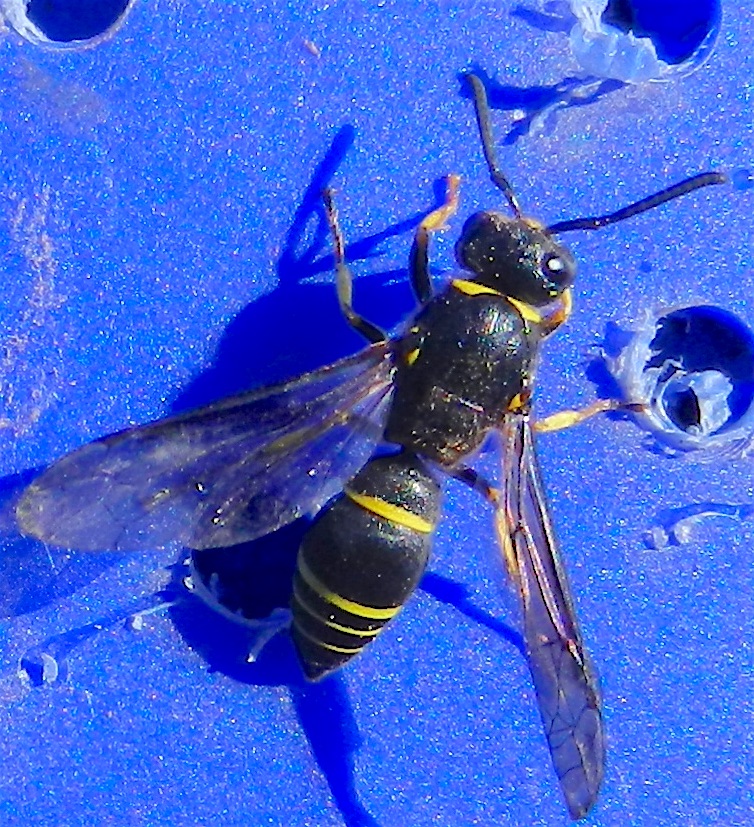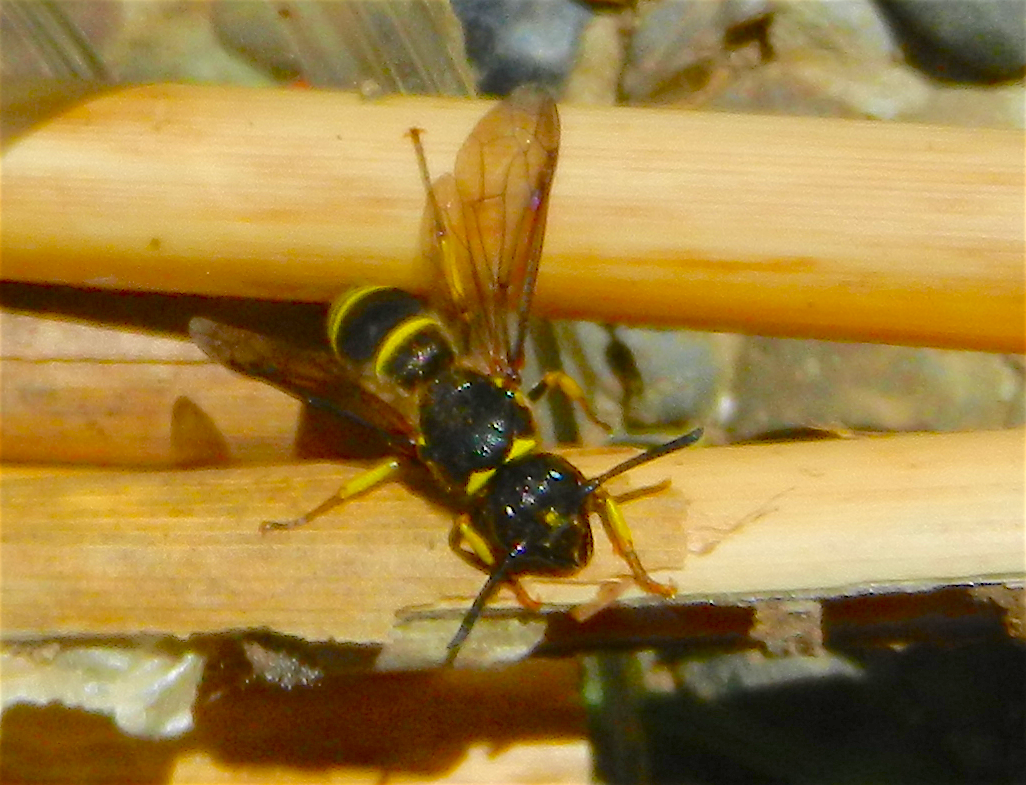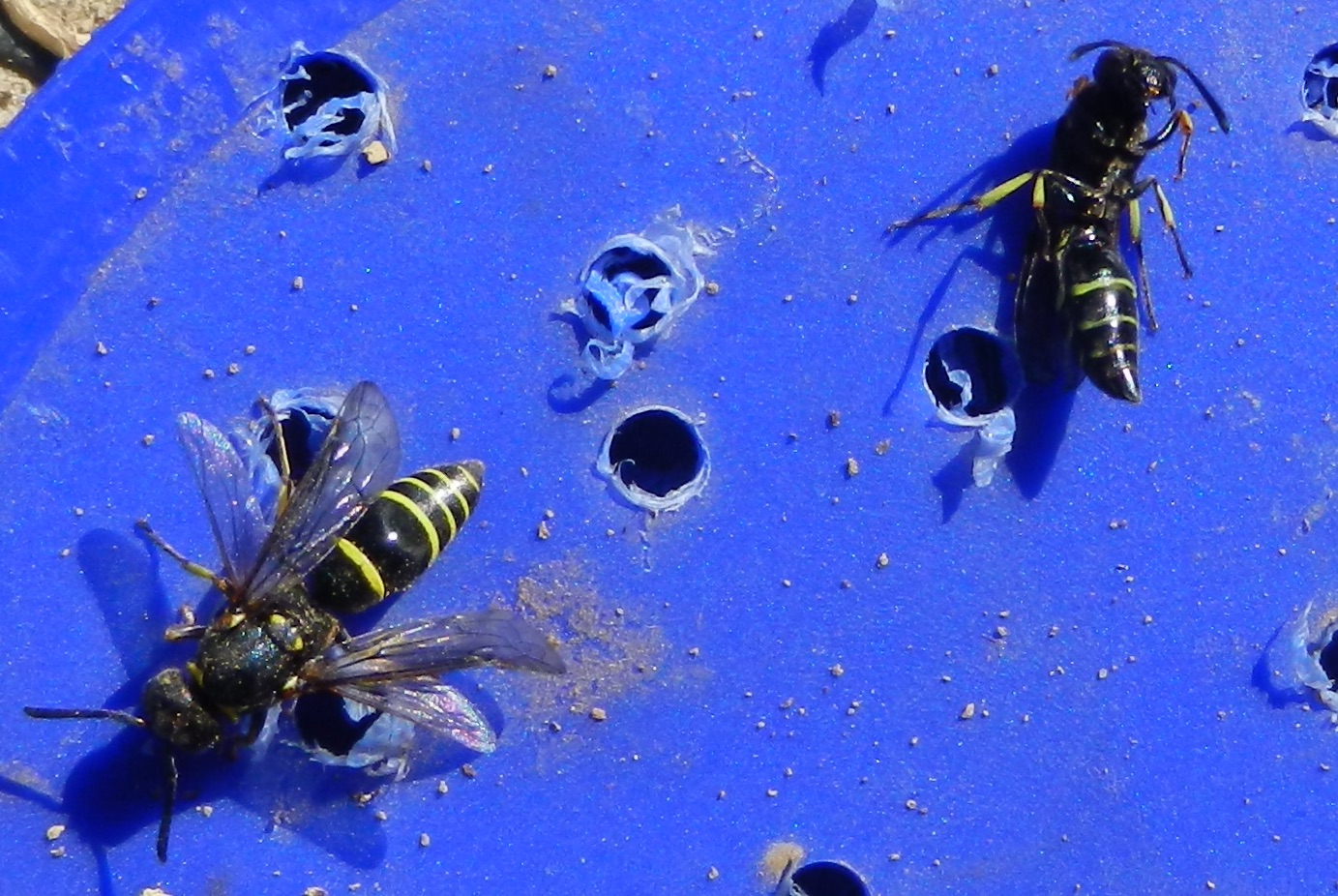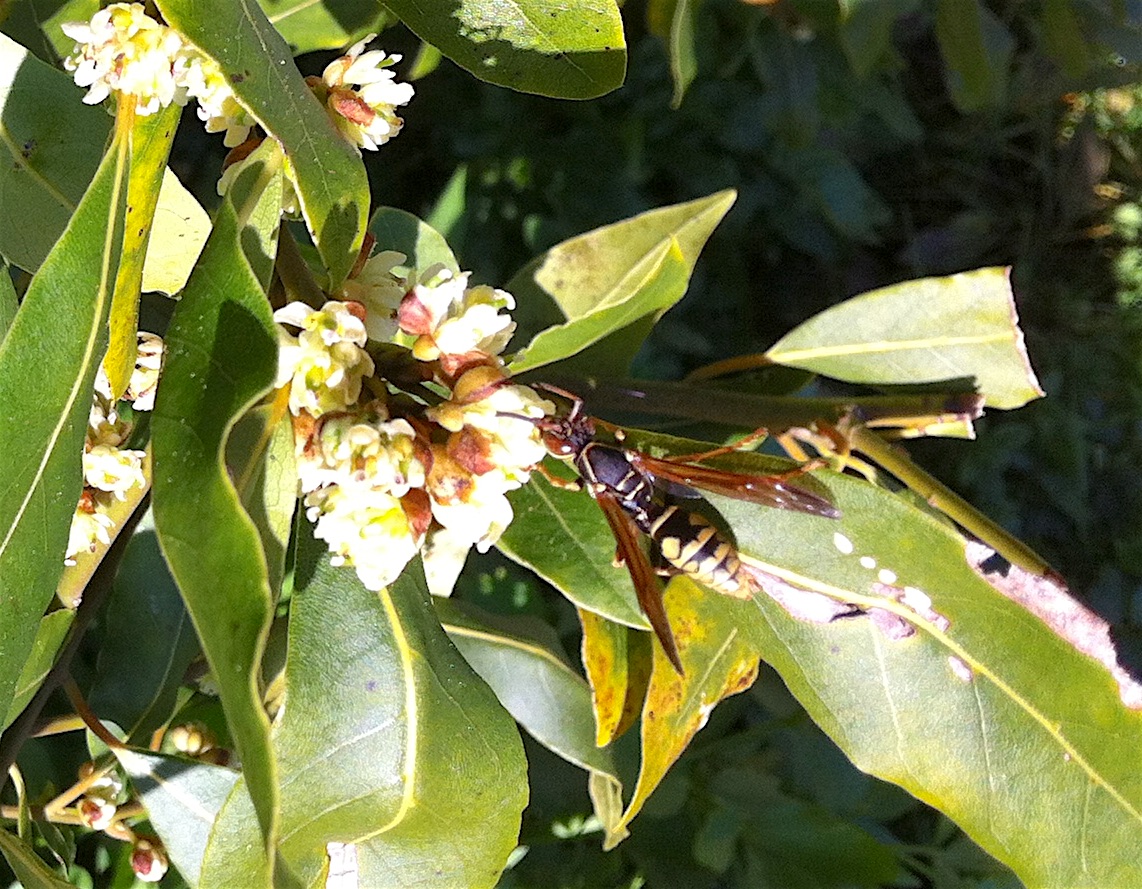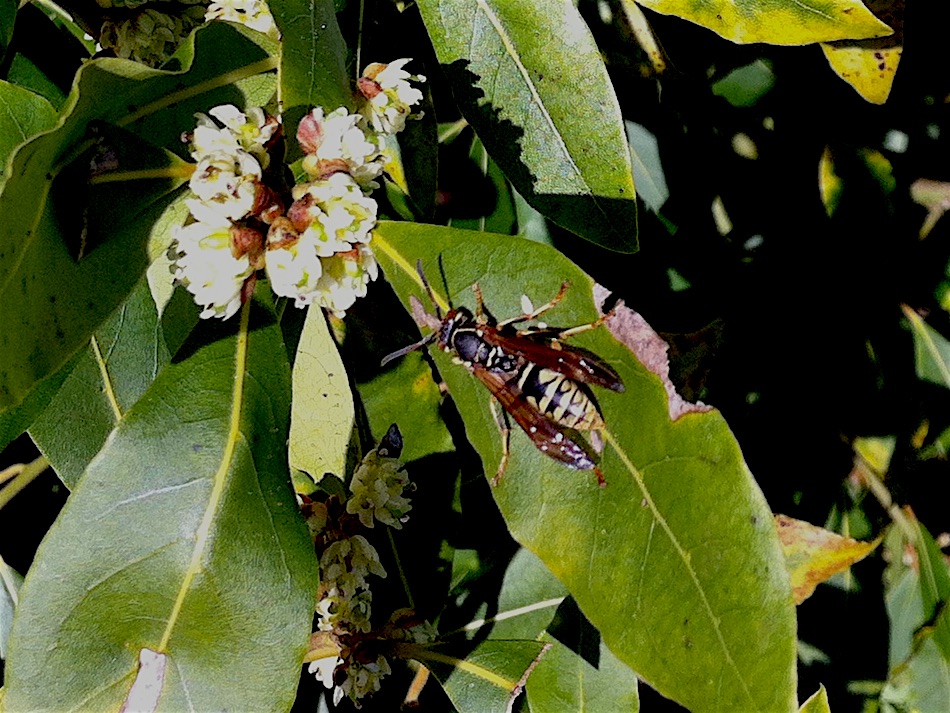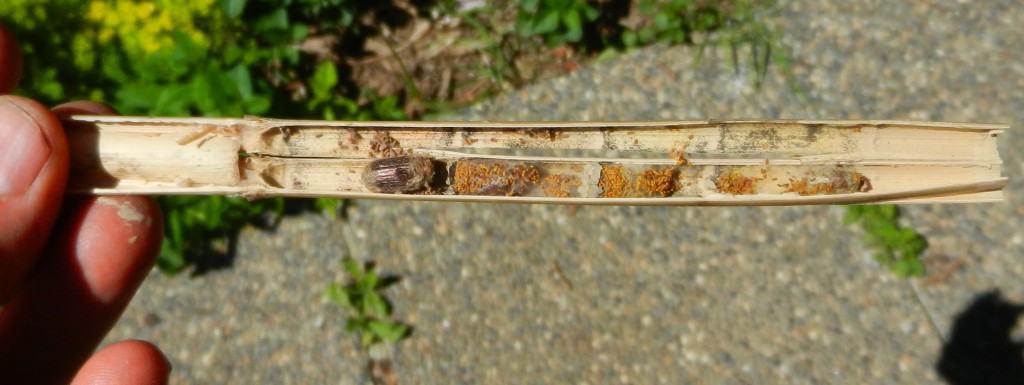When cleaning out the mason bee tubes and recovering cocoons in the winter, I came across several tubes which had been completely colonized by another species of bee/wasp. Images and comments on this can be found in this post:
So now I am trying to get this species identified and will update when I find out. June 6 post shows the identification
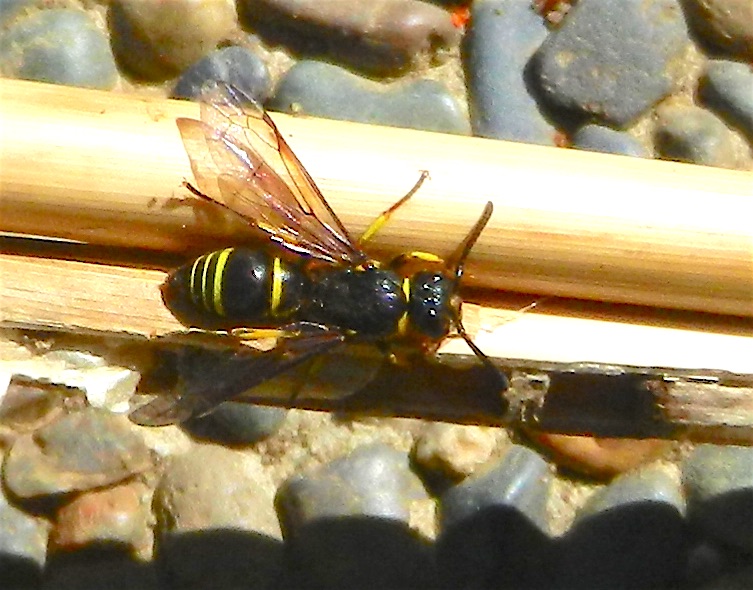
At first I thought these were the paper wasps as they held their wings outspread but the image below of those wasps from the Polistinae family shows a completely different body pattern. Dr. Matthias Buck of the Royal Edmonton Museum is working on samples of these to do DNA sequencing.
